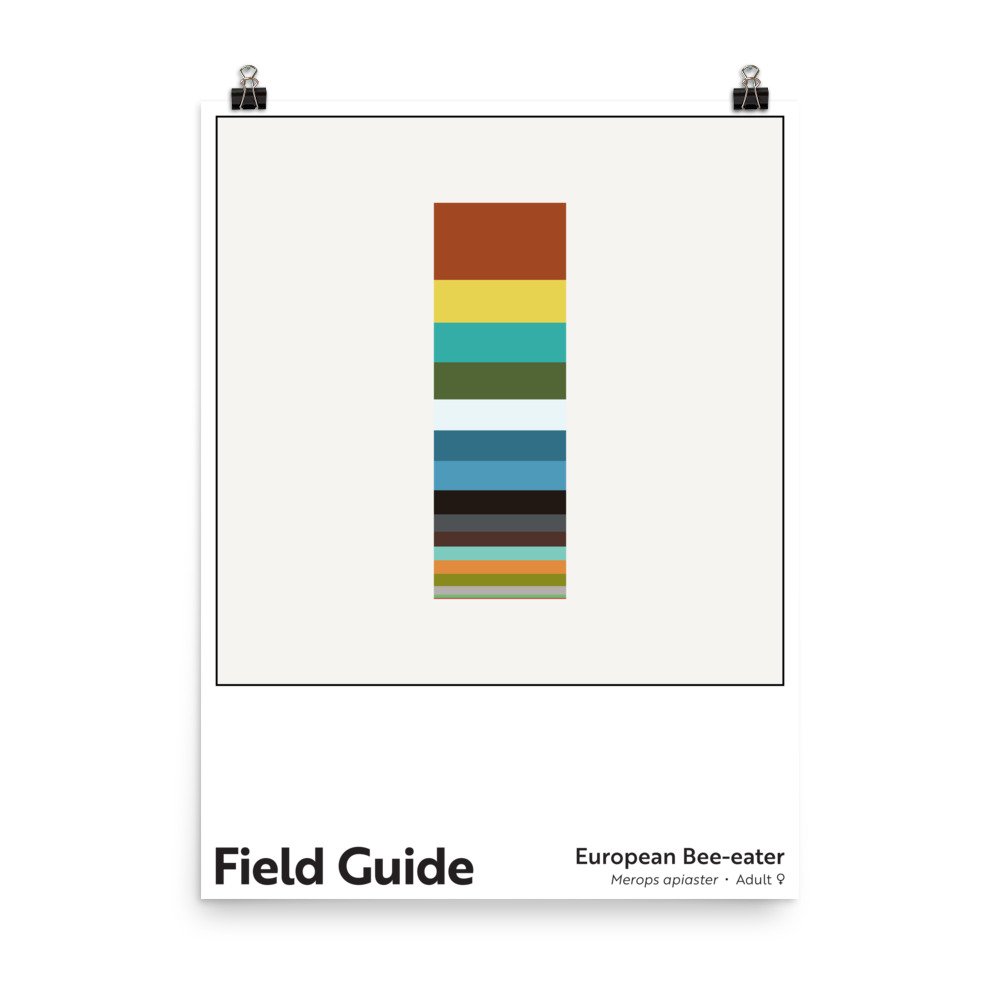Field Guide : European Bee-eater (Female)
Field Guide : European Bee-eater (Female)
Unlimited edition. 18 x 24 inch, museum-quality poster on matte paper.
European bee-eater sexes look almost identical, but females generally have shorter central tail streamers and their shoulders (scapulars) show more avocado and olive than they do mahogany. With these subtle differences in mind, I thought the female’s color column would be ever so slightly more compelling – maybe I just like avocado a lot. 🥑🤷 While it’s impossible to ignore the striking plumage of a European bee-eater, the bird’s proportionally large head impresses, too; it’s a noteworthy noggin. Bee-eaters belong to the Coraciformes order that also includes kingfishers and rollers. As I’ve observed before, I’ve come to consider Coraciiformes the big-headed, tiny-footed order.
Bees and wasps make up the bulk of the European bee-eater’s diet, with beetles, flies, moths/butterflies, and dragonflies/damselflies also in the mix. These insects are usually captured on the wing, with the bird sallying (a short, flying foray) out from its perch to grab insects in mid-air. Because stinging insects make up so much of a bee-eater’s diet, they return to their perch with their prize and repeatedly strike and rub the insect’s body against the tree or another surface; in so doing, the insect is killed and much of its venom is discharged.
During the spring and summer months, this colorful scourge of Hymenoptera is abundant throughout southern and central Europe, northern Africa, and western Asia. In fact, the European bee-eater is the most widespread member of the Meropidae family. It’s considered a climate change “profiteer”; as Europe warms, the species is rapidly expanding its breeding range north. Within the last two decades, bee-eaters have successfully established new breeding colonies “at every edge of its northern distribution” (Cornell Laboratory of Ornithology). During the winter months, the species currently heads to tropical areas of Africa. That migratory pattern, too, will change with our climate.
Note: These archival poster prints feature rich, appealing colors. I encourage customers to take care in handling them until they are framed/protected for display; the darker colors on the matte paper can be scratched. They ship rolled, so customers need to flatten them before framing (or have their framer do so).
Charitable Sales Model: Whenever one of these poster prints is purchased, a charitable contribution equal to 10% of the print’s cost (or $3.60) is made to a nonprofit working to tackle environmental or social challenges. Read more about my charitable sales model here.

